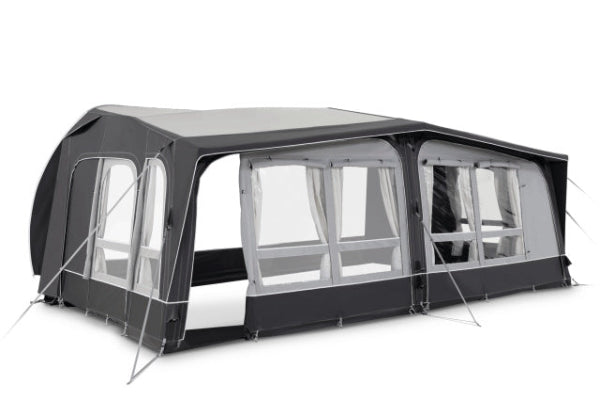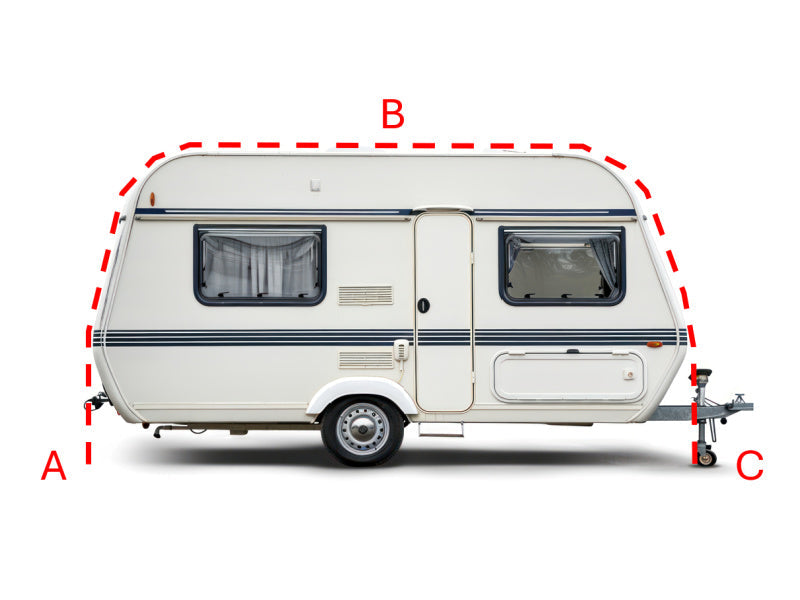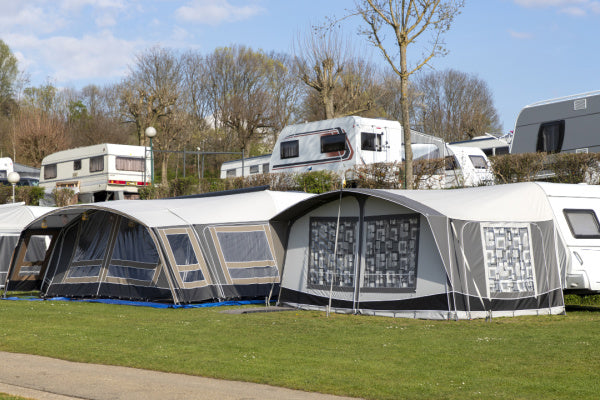What is A Bell Tent: Your Ultimate Guide
Ever seen a giant cupcake pitched in a field? That’s a bell tent — a spacious, stylish glamping tent with a rich British past and serious cosy vibes. Whether you're a camping rookie or luxury-loving glamper, this guide covers why bell tents are iconic, comfy, and surprisingly easy to love.
What is a Bell Tent? Understanding its Unique Design
The Signature Cone Shape and Central Pole
Bell tents are instantly recognisable by their tall, cone-like silhouette. At the heart of the structure is a single, sturdy central pole. This pole supports the canvas walls and gives the tent its stable shape.
The result is a wide, open space that feels airy and inviting — far from the cramped feel of typical tents.

Circular Footprint and A-Frame Doorway
The circular base isn’t just for show. It maximises interior space, allowing room for beds, furniture, and storage.
Many models also feature an A-frame doorway, which provides more headroom at the entrance and adds a clean geometric touch.
Stability from Guy Ropes and Classic Aesthetic
Guy ropes extend outward to anchor the tent firmly in place. This traditional system keeps the structure steady in wind and rain.
It also gives the bell tent its timeless, rustic look — a blend of elegance and practicality that fits right into any landscape.
A Brief History of the Bell Tent
Origins and Evolution (e.g., Sibley Tent)
The bell tent's design has roots in nomadic shelters and military tents. Its modern version was inspired by the Sibley tent, developed in the 19th century.
With its conical shape and centre pole, it was easy to transport, pitch, and maintain — ideal for army use.
From Military Shelter to Modern Glamping Icon
Over time, the bell tent moved from battlefield to campsite. It’s now a staple of both traditional camping and luxury glamping.
Today, you’ll find bell tents across the UK countryside — cosy, stylish, and often kitted out with rugs, fairy lights, and wood stoves.
Why Choose a Bell Tent? Benefits, Features, and Versatility
Unmatched Spaciousness and Comfort
Ample Headroom for Standing and Movement
Thanks to their tall centre and gently sloping walls, bell tents allow most people to stand comfortably inside.
You can move around freely without stooping — a game changer for comfort and usability.

Room for Furniture and Multiple Occupants (e.g., "5m bell tent capacity")
A standard 5m bell tent can fit a double bed, chairs, and still leave space for gear.
It’s ideal for families, couples, or even solo glampers wanting extra breathing room.
This flexibility makes bell tents perfect for both short getaways and extended stays.
Durability and All-Weather Performance
Robust Construction for Diverse Conditions
Bell tents are built to handle the unpredictable British weather.
From summer sun to autumn wind and spring showers, the canvas or polycotton fabric stands up well.
They’re dependable, practical, and resilient.
Understanding Materials (e.g., "canvas bell tent," "polycotton bell tent," "waterproof bell tent")
Canvas bell tents are breathable and excellent in hot or humid conditions. They require a bit more care but offer natural insulation.
Polycotton is a blend — lighter than canvas but still strong, while synthetic tents are affordable and easy to maintain.
Waterproofing is essential in the UK, and many modern bell tents come pre-treated or ready for you to waterproof yourself.
"4 season bell tent" capabilities
With proper setup, some bell tents can be used all year round.
A stove jack, zipped-in groundsheet, and ventilation make them viable in winter as well.
They’re not just summer tents — a true “4 season bell tent” can handle chilly mornings and frosty nights with ease.
Your Guide to Bell Tent Selection, Setup, and Maintenance
Choosing the Right Bell Tent for Your Needs
Sizing Your Bell Tent (e.g., "3m bell tent," "4m bell tent," "6m bell tent")
Bell tents come in a range of sizes to suit every camper.
A 3m bell tent is great for solo use or couples, while a 4m or 5m size is perfect for families.
Need more space for events or group trips? Go for a 6m model.
Key Features to Look For (e.g., "zippable groundsheet," "stove jack," "inner tent," "fire retardant bell tent")
Popular features include zipped-in groundsheets (for easy cleaning), stove jacks (for wood-burning stoves), and optional inner tents for added privacy.
Fire retardant fabrics are important if you’re planning to cook or heat inside the tent.
These extras transform a basic shelter into a comfortable, versatile outdoor living space.

Pitching and Maintaining Your Bell Tent
Simple Setup Process
Pitching a bell tent is surprisingly simple.
Lay out the groundsheet, insert the central pole, peg out the base and guy ropes — and you’re done.
Even first-timers can get one up in under 30 minutes with a bit of practice.
Care Tips for Longevity (e.g., "preventing mould in bell tent")
Always store your bell tent dry and clean to prevent mould.
Canvas tents benefit from occasional reproofing to maintain waterproofing.
Clean synthetic models as per the manufacturer’s instructions, and always air out your tent after use.
Good maintenance means your tent can last for years of adventures — rain or shine.
Other content you might like:
- How To Put Up A Bell Tent
- Bell Tent Vs Yurt
- Bell Tent Vs Normal Tent
- Bell Tent Vs Teepee
- Bell Tent Vs Air Tent
- Bell Tent Cost
- How Much Is Bell Tent Hire
- Best Bell Tents
- Can You Live In A Bell Tent





Leave a comment